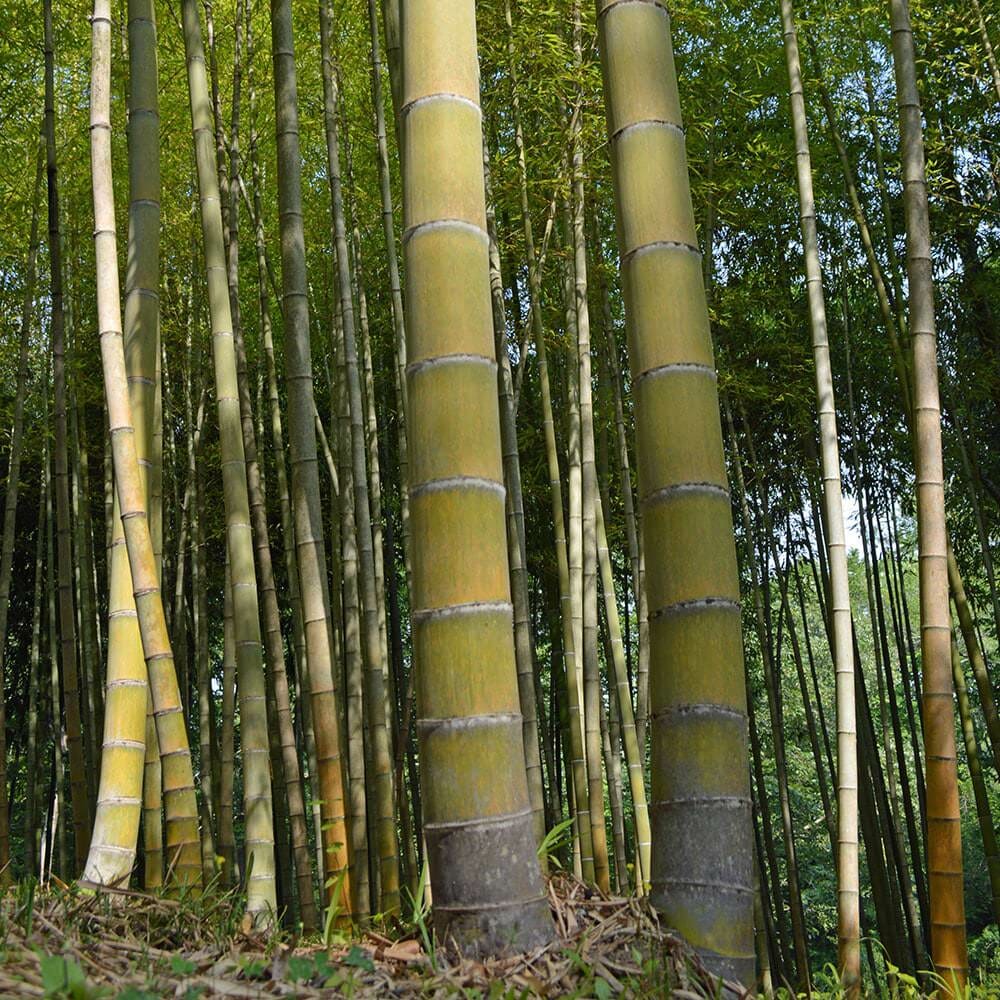
Fast-growing Moso bamboo has a high production and potential in carbon sequestration. Many studies have focused on the contributions of large woody plants to carbon stock, but very few studies have focused on bamboo plants. Terrestrial forest forests play an important role in the global carbon cycle and present a potential in mitigating the warming effect through carbon sequestration. Thus, bamboo forests are unevenly aged stands, where differently aged culms are distributed within a stand.


The age of mature culm is 10 years and it is harvested usually at 6–8 years. Both rhizomes and culms are produced underground every two years asynchronously. Bamboo culms are sprouted by horizontal rhizome systems and present a remarkable productivity. Moso bamboo is a large bamboo species and harvested for both poles and edible shoots throughout South East Asia. About 300 species of bamboo from 44 genera are available in China, and Phyllostachys pubescens (Moso bamboo) forest occurs extensively (4.20 × 10 6 ha) and dominates bamboo forests (70% of total bamboo cover). The growth patterns of bamboos differ from timber, and their unique characteristics include fast growth, high production, and rapid maturation from shoots to culms. Bamboo provides wood and food for human consumption and presents economic and ecological benefits. In China, the bamboo area is approximately 6.01 × 10 6 ha and accounts for approximately 3% of the total forest area. Parameters obtained in this study can be used to accurately estimate the carbon stock of Moso bamboo forest to establish models of the global carbon balance.īamboo ( Bambuseae), an important forest type worldwide, is mostly distributed in the tropical and subtropical regions of Asia. As a fast-growing plant, Moso bamboo could be harvested amounts of 6.0 Mg C ha −1 to 7.6 Mg C ha −1 annually, which indicates a high potential of this species for carbon sequestration. The total carbon stock of Moso bamboo forests, which comprises soil and biomass carbon, ranged from 87.83 Mg C ha −1 to 119.5 Mg C ha −1 and linearly increased with latitude. The bamboo biomass carbon decreased from 60.58 Mg C ha −1 to 48.31 Mg C ha −1 from north to south. Results showed that the diameter at breast height (DBH) of Moso bamboo culms increased from 8.37 cm to 10.12 cm that well fitted by Weibull model, whereas the bamboo culm density decreased from 4722 culm ha −1 to 3400 culm ha −1 with increasing latitude. In this study, a field survey with 36 plots of Moso bamboo forests along a latitude gradient was conducted to investigate carbon stock.

Nevertheless, the effect of latitude on the carbon stock of Moso bamboo remains unclear. Accurate estimation of the carbon stock of Moso bamboo forest can contribute to sufficient evaluation of forests in carbon sequestration worldwide. Latitude is an important factor that influences the carbon stock of Moso bamboo ( Phyllostachys pubescens) forests.


 0 kommentar(er)
0 kommentar(er)
